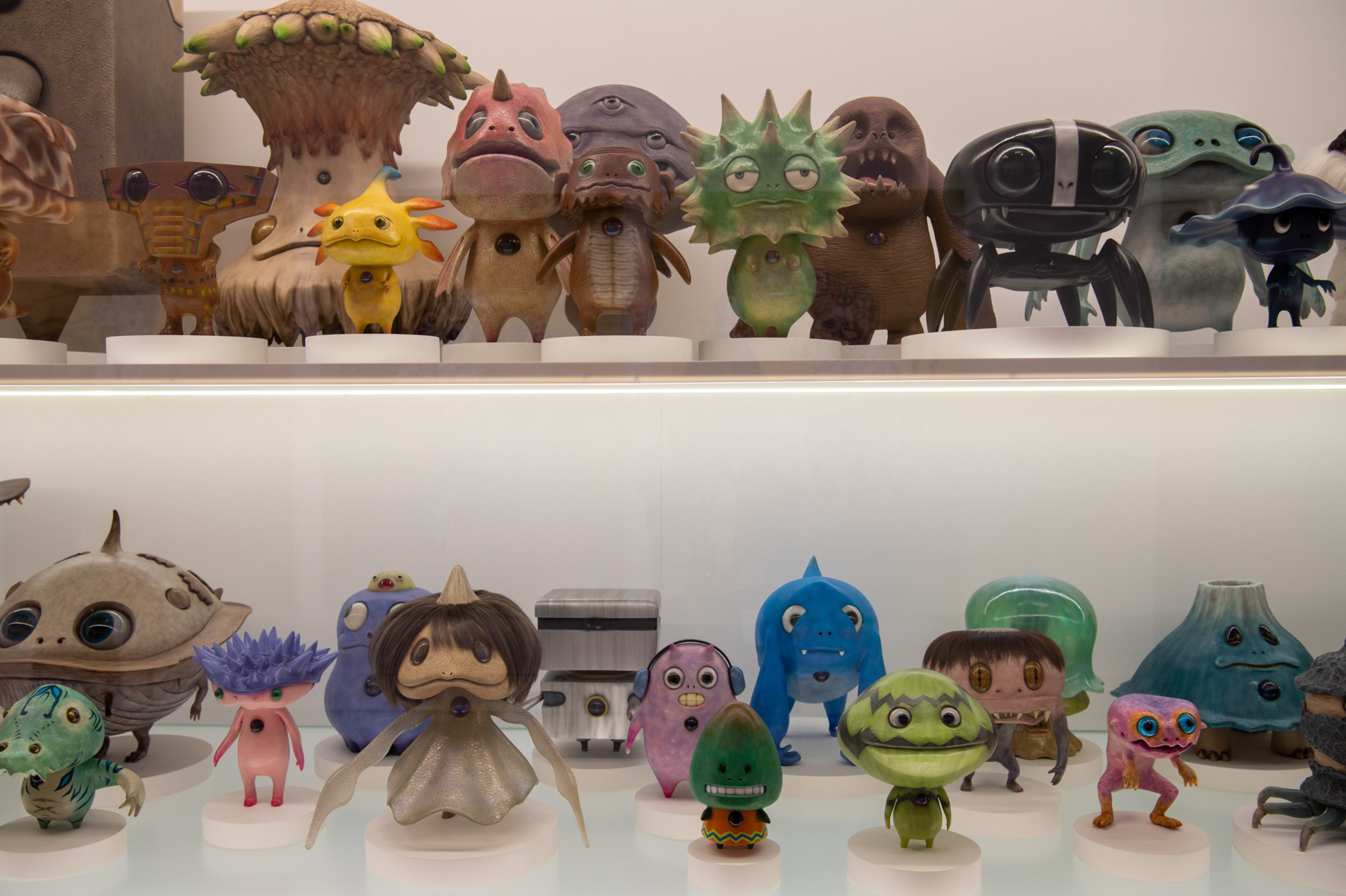Frequently ranked (opens in new tab) as one of the most influential (opens in new tab) living artists and famous for his anime-inspired designs, Takashi Murakami puts monsters on full display with his first-ever solo exhibition in San Francisco.
“Takashi Murakami: Unfamiliar People—Swelling of Monsterized Human Ego” took five years to complete, includes 12 never-before-seen artworks and will be on view to the public from Sept. 15 to Feb. 12.
The Japanese artist explained at a press conference Wednesday how his childhood during the Vietnam and Cold Wars (and his parents’ experience of the Pacific Theater of World War II) sparked his curiosity for humankind’s ability to destroy itself.

“Chaos is the norm,” Murakami said through a translator at Wednesday’s press event at the Asian Art Museum.
Yet what the 61-year-old painter fears most now is not an atomic bomb or even climate change—it’s the internal war within all of us.
“I am most scared of the ego, the inner struggles that can’t be suppressed,” he said.
The sentiment reflects a foundational shift in the artist’s career—one that began in the 1990s by focusing on externalized monsters like Godzilla and comic book-style villains, but has since come to focus on the “monsterization” of humanity in the wake of the pandemic and the digital age.
READ MORE: Downtown SF Museum Thinks Inside the Box With New Affordable Asian Eatery
Yet if the exhibition is about how social media incentivizes egotism and transforms relationships, it is simultaneously manically joyful—and a love letter to the Asian Art Museum itself.
Some of the exhibition’s more than 75 pieces were tailored to the dimensions of the museum’s walls, and others, like “Lidded Jar with Design of a Lotus Pond,” were inspired by objects from within the museum’s collection.
But perhaps most impressive of all is the massive painting—83 feet long and 10 feet high—that Murakami created specifically for the exhibition, titled “Judgement Day.”
“It was a monumental lift,” said Zac Rose, associate director of communications for the Asian Art Museum, who previously described the artwork as a “late-career masterpiece.”

The sprawling 2023 painting represents a departure from the artist’s earlier work by being less cartoonish and more influenced by Japanese woodblock prints. Figures with tangled limbs and two massive ships—one peopled with samurai, the other with 16th-century Portuguese sailors—dominate the canvas.
“It’s about miscommunications and mistranslations, with the artist playing across traditions,” said Laura Allen, senior curator of Japanese art at the Asian Art Museum.
As evidence of the dialogue between the museum and the artist, Allen ended up providing the title of the art when she said the brooding face looming on the canvas looked like “judgment day.”

Lest the monumentality of the painting overwhelms you, there’s relief right around the corner in a cheerful room whose floor and walls are covered with Murakami’s trademark smiling flowers in a rainbow of colors—an image that also greets your feet as soon as you step through the doors of the museum.
While the exhibition is up for five months, this room will keep its sunny decorations—including a pink neon sign “Weirdly Lovable, Lovably Weird” (a slogan crafted by an Asian Art Museum employee) and a three-dimensional smiling flower family—for a full year.
“It’s visible from the street,” Allen said, “and it’s bringing life and energy to the neighborhood.”
A set of blue-and-white fish paintings inspired by the patterns of Ming dynasty porcelain—what Allen likened to walking through an aquarium—took Murakami the longest to complete, their creation requiring a painstaking process that included sanding off layers of paint.
The paintings hold a particularly dear place in the artist’s heart, since their genesis stems from an encounter Murakami had when he was just 29 years old. After his debut at a small art gallery in Osaka, the owners took the artist out to visit a local ceramics museum, where they showed him a blue-and-white jar they said embodied eros and sensuality.
“I have deep feelings about these paintings because they took me so long to create,” Murakami said, referring to the 30 years it took him to act on that moment of inspiration.

The Japanese artist coined the theory of “Superflat” in 2000 as a way to describe the two-dimensionality of manga and anime that also shares commonalities with pop art, like the comic-inspired work made famous by Andy Warhol. For Murakami, the concept applied to Japanese history as well, but he made clear Wednesday the term was not intended to be pejorative.
“It’s portraying Japanese history in an honest way,” Murakami said. “I hate when people say it’s critical.”
While Murakami wants to highlight the ways in which our virtual interactions became toxic during the pandemic, that does not mean the artist is afraid of technology.
On display are 108 painted representations of the artist’s creation of NFTs, unique works of art recorded on the blockchain and purchased with cryptocurrency (Murakami has to date released 11,664 flower-shaped NFTs into the world).

And on the subject of AI?
“It’s a very sensitive issue in the art world,” Murakami said. “But I’ve used it in my show.”
Yet despite his experimentation with NFTs, avatars and AI, Murakami is an artist who remains firmly planted in the physical world. Even his appearance signals his presence as a creative: He wears a necklace of one of his anime creatures around his neck and baggy jeans with what appear to Murakami cretins stitched onto the legs.
“On the most basic level,” he said, “I am a traditional artist.”
